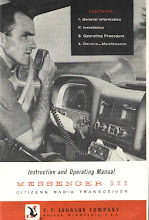Contingency, Chance and Contiguity in Tsai’s The Hole
The generative centre of the film is a plague/epidemic which has afflicted the city. Official dictates heard over the radio on the soundtrack urge the public to evacuate. Those
 who remain do so in flagrant defiance both of logic and the law. It is this liminal state that Tsai locates his narrative: a spatio-temporal co-ordinate /locus from which whereon/in normativity is in abeyance.
who remain do so in flagrant defiance both of logic and the law. It is this liminal state that Tsai locates his narrative: a spatio-temporal co-ordinate /locus from which whereon/in normativity is in abeyance.This is of course a frequent recourse in cinema: war, plague, cataclysm...these ruptures in normative civil management offer the filmmaker an opportunity to explore a limit situation wherein the organisation of the social body breaks down and begins to spawn mutating and transformative alliances and ruptures.
In Deleuze’s concept of naturalism it is often the building which offers a link with nature - a primordial undifferentiated continuum measurable only in intensities. Tsai’s film clearly belongs to this tradition with its dual onslaught of rain and pestilence. The rain establishes a relentless and univocal backdrop, a continuum. The hole which appears between the two floors of the apartment block enables, ultimately, the downward gaze and voyeurism of the man.
Within the gaping space of the evacuated city - the man steadfastly continues to open his stall in
 the abandoned market - is opened up also, however, a ludic possibility. Via the widening hole the man and woman play out a strange and mute courtship (any reading of the film which insists on viewing the hole in a predominantly sexually symbolic register as orifice to be penetrated is missing much). As the downpour persists and as all continues to precipitate (notably the bags of rubbish which plummet to the ground throughout the film), the film offers its own ruptures in that continuity in the form of the song and dance sequences in the elevator and along the walkways of the building (the entire film is dedicated to the Hong Kong chanteuse Grace Chang). The economy and the traffic human and otherwise of the film takes place within these thoroughfares, only one of which is the hole.
the abandoned market - is opened up also, however, a ludic possibility. Via the widening hole the man and woman play out a strange and mute courtship (any reading of the film which insists on viewing the hole in a predominantly sexually symbolic register as orifice to be penetrated is missing much). As the downpour persists and as all continues to precipitate (notably the bags of rubbish which plummet to the ground throughout the film), the film offers its own ruptures in that continuity in the form of the song and dance sequences in the elevator and along the walkways of the building (the entire film is dedicated to the Hong Kong chanteuse Grace Chang). The economy and the traffic human and otherwise of the film takes place within these thoroughfares, only one of which is the hole.Tsai’s film seems to acknowledge, with Jean-François Lyotard, that in the contemporary megalopolis there is “only transit, transfer, translation and difference. It is not the house passing away, like a mobile home or the shepherd’s hut, it is in passing that we dwell” [The Inhuman: Reflections on Time, trans. Geoffrey Bennington and Rachel Bowlby (Oxford: Polity Press, 1991) 198]. The film can be located within this economy of ‘passage’.

No comments:
Post a Comment